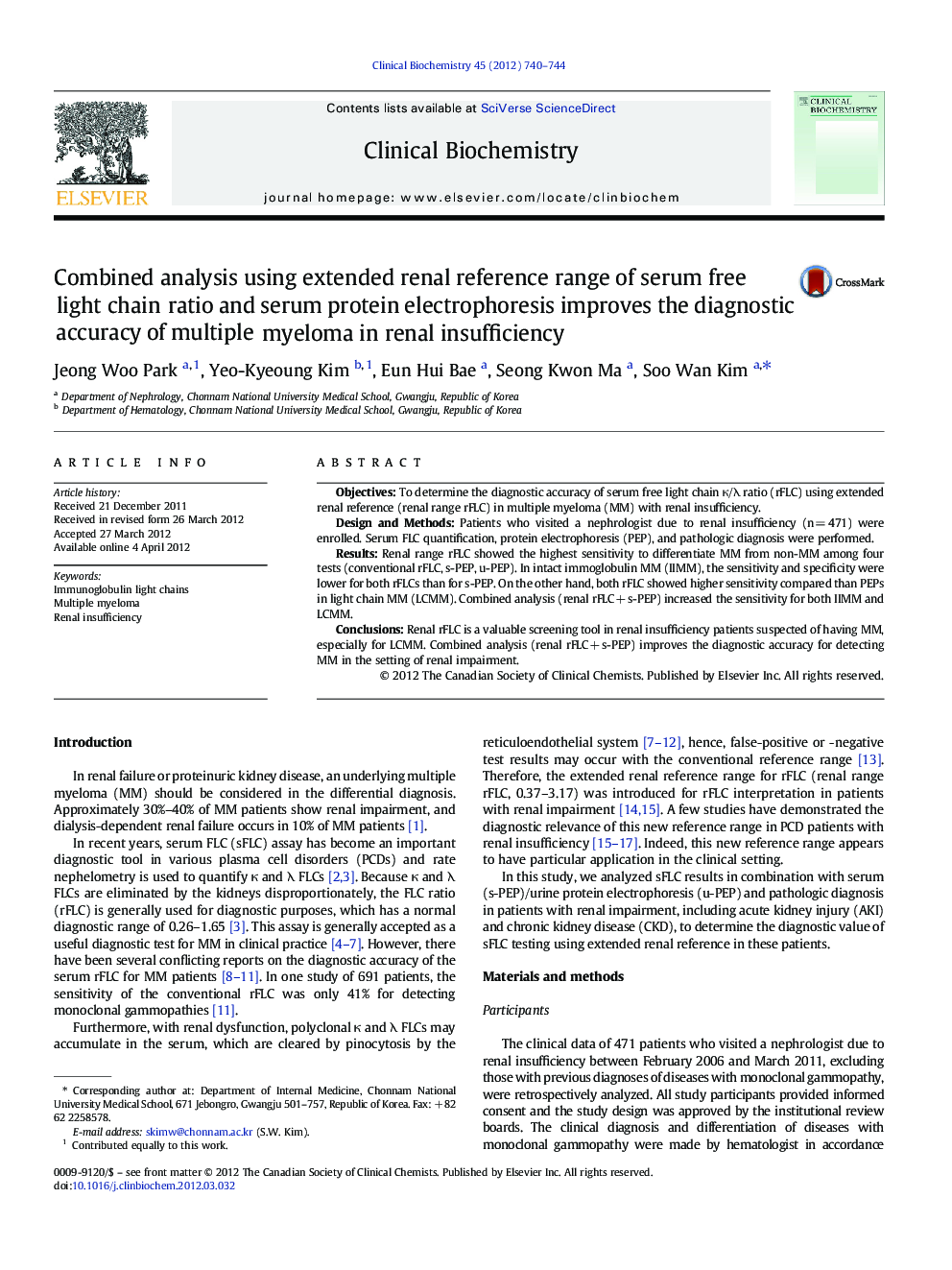| Article ID | Journal | Published Year | Pages | File Type |
|---|---|---|---|---|
| 1970182 | Clinical Biochemistry | 2012 | 5 Pages |
ObjectivesTo determine the diagnostic accuracy of serum free light chain κ/λ ratio (rFLC) using extended renal reference (renal range rFLC) in multiple myeloma (MM) with renal insufficiency.Design and MethodsPatients who visited a nephrologist due to renal insufficiency (n = 471) were enrolled. Serum FLC quantification, protein electrophoresis (PEP), and pathologic diagnosis were performed.ResultsRenal range rFLC showed the highest sensitivity to differentiate MM from non-MM among four tests (conventional rFLC, s-PEP, u-PEP). In intact immoglobulin MM (IIMM), the sensitivity and specificity were lower for both rFLCs than for s-PEP. On the other hand, both rFLC showed higher sensitivity compared than PEPs in light chain MM (LCMM). Combined analysis (renal rFLC + s-PEP) increased the sensitivity for both IIMM and LCMM.ConclusionsRenal rFLC is a valuable screening tool in renal insufficiency patients suspected of having MM, especially for LCMM. Combined analysis (renal rFLC + s-PEP) improves the diagnostic accuracy for detecting MM in the setting of renal impairment.
►Renal rFLC showed highest sensitivity for detecting MM in renal impairment patient. ►rFLC showed lower sensitivity and specificity than PEPs for detecting IIMM. ►rFLC had 100% sensitivity for detecting LCMM, whereas PEPs showed low sensitivity. ►Combined analysis using renal rFLC and s-PEP improves the diagnostic accuracy for detecting MM.
